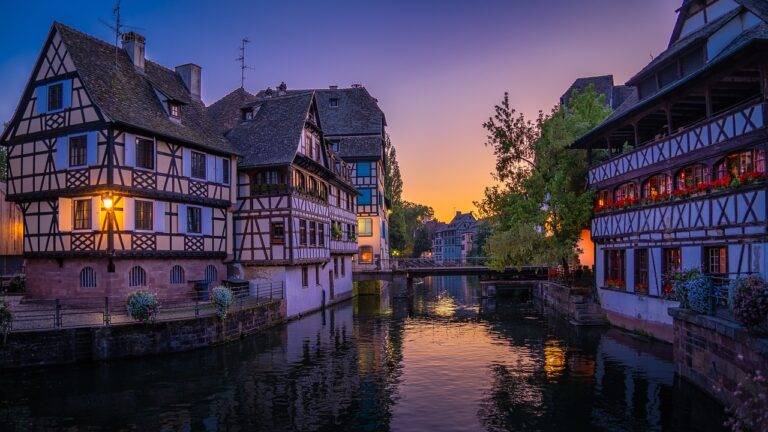The Role of Street Art in Shaping Travel Experiences
Street art has long been a vibrant form of self-expression, offering a glimpse into the cultural fabric of a city and providing a unique insight into the lives of its residents. For many travelers, discovering street art while exploring a new destination can be a transformative experience, helping to shape their perceptions and memories of a place. In this article, we will explore the role of street art in shaping travel experiences, from its impact on urban landscapes to its ability to foster connection and dialogue among diverse communities.
The Evolution of Street Art
While street art has been a part of urban life for centuries, it was in the late 20th century that the art form truly began to gain recognition as a legitimate medium of expression. Artists such as Banksy, Shepard Fairey, and Keith Haring helped to popularize street art and bring it to a global audience. Today, street art can be found in cities around the world, from the colorful murals of Wynwood Walls in Miami to the politically charged works in Belfast, Northern Ireland.
One of the defining characteristics of street art is its ephemeral nature. Unlike traditional art forms that are preserved in galleries and museums, street art is often temporary, subject to weather, vandalism, and the ever-changing landscape of a city. This impermanence can add to the allure of street art, as viewers are aware that the artwork they are witnessing may not be there tomorrow.
Street Art as a Reflection of Culture
Street art often serves as a reflection of the cultural, political, and social issues facing a community. In many cities, street artists use their work to address issues such as gentrification, inequality, and environmental degradation. By creating art in public spaces, these artists are able to engage with a wider audience and provoke thought and discussion on important topics.
For travelers, encountering street art can offer a window into the soul of a city. The murals, graffiti, and installations that line the streets of a destination can reveal the hopes, dreams, and struggles of its residents. By taking the time to explore these artworks, travelers can gain a deeper understanding of the local culture and connect with the people who call the city home.
Street Art and Tourism
As street art has gained popularity in recent years, many cities have begun to embrace it as a form of cultural tourism. Street art tours have sprung up in cities around the world, offering visitors the chance to explore the hidden gems of a destination and learn about the artists behind the works. These tours not only provide an economic boost to local communities but also help to foster a sense of appreciation and respect for street art as a legitimate art form.
For travelers, street art can serve as a guide to a city, leading them off the beaten path and into neighborhoods they may not have otherwise explored. By seeking out street art, travelers can discover hidden treasures, local cafes, and vibrant communities that may not be included in traditional guidebooks. This sense of discovery can add depth and richness to a travel experience, allowing travelers to connect with a city on a more intimate level.
Preserving Street Art
Despite its popularity, street art is often at risk of being destroyed or erased. Local governments, property owners, and developers may view street art as vandalism or a nuisance, leading to the removal or whitewashing of works that have taken weeks or months to create. In response, many cities have begun to implement programs to protect and preserve street art, recognizing its cultural and artistic value.
In recent years, organizations such as the Museum of Urban Art in Berlin and the Street Art Museum in St. Petersburg have worked to conserve and document street art, creating a lasting record of this dynamic and ever-evolving art form. These initiatives not only help to protect the legacy of street artists but also ensure that future generations will be able to appreciate and learn from their work.
The Future of Street Art
As the popularity of street art continues to grow, its impact on travel experiences will only become more pronounced. For many travelers, exploring a city’s street art scene has become an integral part of their itinerary, offering a unique lens through which to view a destination and connect with its residents. Whether it’s a sprawling mural on the side of a building or a small stencil on a street corner, street art has the power to inspire, provoke, and unite people from all walks of life.
By recognizing the role of street art in shaping travel experiences, we can gain a greater appreciation for the beauty and complexity of the world around us. Through its vibrant colors, bold statements, and powerful images, street art invites us to see our surroundings in a new light, challenging us to think critically about the issues that matter most. As we continue to explore the streets of our cities and the world beyond, let us remember the transformative power of street art and the profound impact it can have on our lives.
FAQs
1. What is street art?
Street art is a form of visual art created in public spaces, typically using techniques such as spray paint, stenciling, and wheatpasting. Street art can take many forms, including murals, graffiti, and installations, and often serves as a reflection of the cultural, political, and social issues facing a community.
2. Why is street art important in shaping travel experiences?
Street art offers travelers the opportunity to explore the hidden gems of a destination and connect with the local culture in a meaningful way. By seeking out street art, travelers can gain a deeper understanding of the hopes, dreams, and struggles of a city’s residents, enabling them to see the world from a different perspective.
3. How can travelers support street art preservation?
Travelers can support street art preservation by respecting the artwork they encounter, engaging with local artists and communities, and advocating for policies that protect and celebrate street art as a legitimate art form. By taking these steps, travelers can help to ensure that street art continues to thrive and inspire for generations to come.





